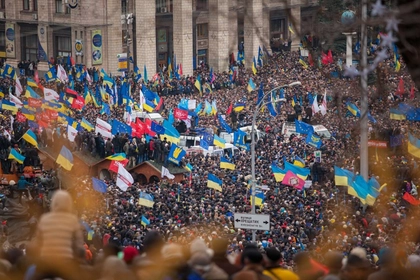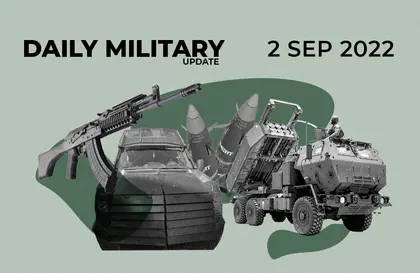Ukrainian Armed Forces (UAF) on the southern front seemed to be slowly gaining ground on Friday, official and unofficial information sources said, but Russian state-controlled information platforms claimed Kyiv’s attacks around Kherson and elsewhere in the sector had mostly been repulsed, with losses.
Four days into a wave of local attacks kicked off by the UAF, Ukrainian ground units appeared to have taken control of between five and ten front line villages along the 180-plus-kilometer southern front, running from the port city Kherson to the H23 Kryvyi Rih-Mykopol highway. The Inhulets River runs along the front line of much of the sector.
JOIN US ON TELEGRAM
Follow our coverage of the war on the @Kyivpost_official.
Independent news agencies, at times backed up by video posted by Ukrainian soldiers in the field, showed UAF infantry and tank units moving freely in bridgehead localities on the southeastern bank of the Inhulets, near the town Arkhangelsk and the villages Snihurivka and Davydiv Brid. RF-associated information platforms and Ukrainian independent media reported ground combat in progress at other points across the sector.
Ukrainian official sources continued a near-total news blackout from the fighting line, banning reporters and, for the most part, limiting comment on the Kherson area offensive as “an operation still in progress.”
The UAF command responsible for operations in the Kherson sector, Joint Command South (JCS), was silent on locations and possible advances of Ukrainian troops in its Sep. 1 evening situation update, but claimed that over the last 24 hours its soldiers had destroyed or otherwise rendered combat-incapable 102 RF troops, 5 tanks, 8 armored vehicles, 3 artillery pieces or guns, and five ammunition depots.

Tsikhanouskaya Honors Ukraine’s Day of Dignity and Freedom
UAF aircraft carried out eight air strikes in support of the ground operations, concentrating on command centers, fuel depots and ammunition storage sites, the JCS statement said. Independent media and RF social media said the Ukrainian air strikes took place mainly along the M14 highway, connecting UAF-controlled Mykolaiv with RF-controlled Kherson.
RF state-controlled media claimed its forces shot down more than 200 UAF aircraft, or roughly four times the entire UAF air force at the start of the war. The only reports of RF air activity of the day was an Su-35 strike fighter that launched a cruise missile while above the village Berznuavetsk, and an aerial bomb dropped on Mykolaiv. Both escaped but UAF air defenses shot the missile down, the statement claimed.
Long-range UAF rocket strikes continued against the logistically critical bridges for Russia, and an RF-run, ad hoc river ferry in the Kherson sector, official Ukrainian statements and RF media said. Reports from both sides said systematic UAF bombardment of crossing sites on the Dnipro and Inhulets Rivers, now in its third week, has left the RF military with no safe means of moving heavy weapons in or out of Kherson.
Some RF-associated information sources claimed the pace of the UAF attacks in the southern sector had fallen off by Friday. The Kremlin-financed Readovka Telegram channel wrote: “In the Southern direction today, compared to the past days, it was quiet. The offensive ardor of the enemy fizzled out, in view of the losses incurred, disproportionate to the modest territorial achievements.”
Pro-UAF media, such as Reporting from Ukraine, said the UAF offensive was not only still in progress but achieving objectives as planned. The overall UAF strategy is to launch strong ground attacks with modest objectives across the wide Kherson front in order to force RF command to commit mobile reserves to static defense, which the UAF, possessing an advantage in long-range precision-guided weapons, will destroy in attrition, the site said.
Ukrainian news sites and social media from RF-controlled territory reported multiple nighttime explosions within Kherson itself, in the town Nova Kakhovka, and even in Melitpopol more than a hundred kilometers behind the fighting line.
Anton Gerashchenko, an Interior Minister official and frequent commentator on military developments, said in a Friday Facebook post that the UAF was using a combination of long-range strike weapons like the US-made HIMARS and M270 rocket systems, plus sabotage groups operating deep in the RF rear area, to carry out the attacks.
Ivan Federiv, the UAF-loyal Melitopol mayor-in-exile, in a Thursday evening statement said UAF units set off at least ten explosive devices among RF troops and equipment in the city’s Molochny Liman’ region. Multiple social media posts appeared with recordings of nighttime blasts from that location. Federiv did not say whether it was long-range weapons or saboteurs that carried out the attacks.
You can also highlight the text and press Ctrl + Enter






